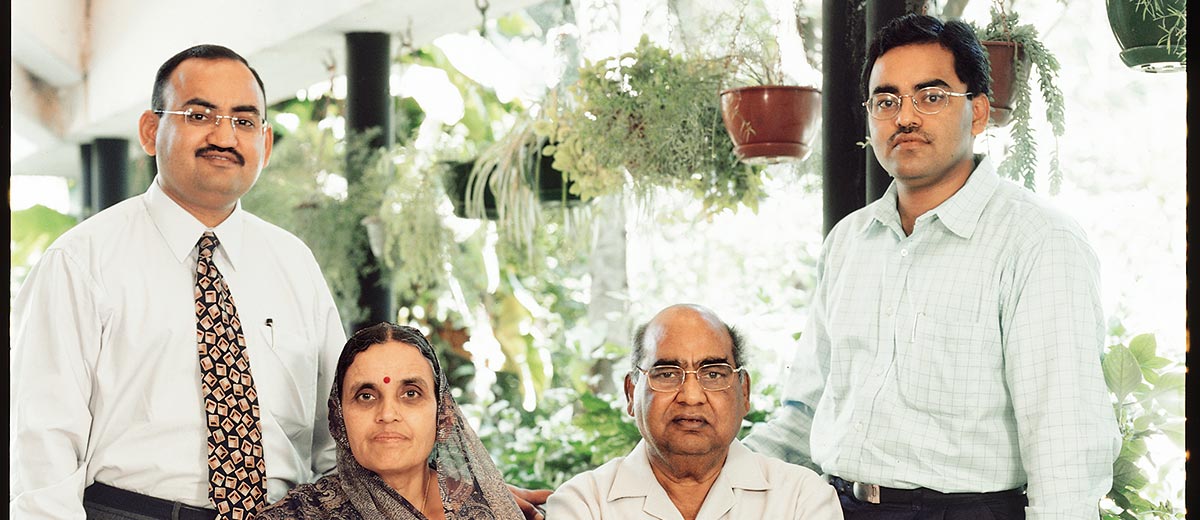
The Accidental Entrepreneur
Pallav Nadhani was just 17 when he founded FusionCharts, a company that sells data visualisation (charting) libraries. Nadhani talks to MARWAR about his journey from a college student to becoming an entrepreneur quite by accident and building a business that has 28,000 customers in 118 countries today.
SOME OF THE MOST SUCCESSFUL and inspirational entrepreneurs never set out with the goal of founding and running an enterprise. Many are simply motivated to develop solutions to a problem they are facing at a given point in time. For Pallav Nadhani, it was a desire to earn more pocket money, as a student. He was just 17 then. FusionCharts, the company he started in 2002, has grown into a large business today that employs about 88 people at its offices in Kolkata and Bengaluru. Nadhani says, “I call myself an accidental entrepreneur, as I did not set out to start a company. But one thing led to another, and here we are today with 28,000 customers in 118 countries.” What makes FusionCharts’ story unique is that it has been self-funded and profitable from day one. Nadhani explains: “We’ve been bootstrapping from inception and only believe in using money that we get from our customers. Our operating overheads were near zero, so we were profitable from the first year and have stayed profitable every year thereon over the last 17 years.”
Pallav Nadhani receiving the ‘Deloitte Technology Fast 50 India’ award for FusionCharts in 2009
Tryst with technology
Nadhani was born in Bhagalpur, Bihar. His ancestors were from Suratgarh in Rajasthan, and his family had migrated to Bhagalpur many years ago. His father, Kisor Kumar Nadhani, ran a computer training academy in Bhagalpur, and the only luxury item they had in the house was a computer. A young Pallav would spend countless hours on the computer at home almost every other night. He would also read the computer books lying around in the house. He thus became hugely interested in computers and began learning on his own. Kisor Nadhani’s training centre did not end up being lucrative, and by 1999, he had moved with his family to Kolkata in search of better prospects. Here, he started a web designing and accounting software products’ company. Since he did not have many employees, he asked Pallav to lend a hand by doing web designing. Pallav would attend school and then visit his father’s office to learn various aspects of web designing and design web pages before going home to do his homework
Birth of a business
Later, when he realised that his father was using boring Excel charts for his applications, Pallav Nadhani came up with the idea to code a programme that would create interesting charts by using Microsoft ASP (a web application framework) and Macromedia Flash (an animation software). What followed was a stroke of good fortune. “To earn some extra pocket money, I wrote an article about this idea and published it on ASPToday.com that paid me $1,500 for it,” says Nadhani. Developers frequenting the website were intrigued by his idea. They began contacting him to suggest changes and improvements in the design and functionality. Soon the idea of productising the article began germinating in Nadhani’s mind, and the $1,500, along with his father’s computer, served as the impetus and seed capital for FusionCharts.
The first product was launched in April 2002. Called fXgraph, it had two versions: a User Edition priced at $15 and a Developer Edition (which also included the source code) priced at $49. Nadhani promoted his product by writing articles on technology websites and getting in touch with the developers he’d met on ASPToday.com. In mid-April, he got his first purchase order—for the User Edition of fXgraph—from a gentleman in the USA. However, Nadhani says that the sale resulted in bank processing fees that were higher than the price of the product itself! He then borrowed his uncle’s credit card and set up an online payment gateway. He made two more sales—this time of the Developer Edition—in the same month and made a profit. In the months that followed, he released the fXgraph v2, v3 and v4 versions, followed by fXgraph 3D and fXgraph v6.
Nadhani then started working on FusionCharts v1, which was launched in October 2002, with a User Edition priced at $35 and a Developer Edition (with the source code) priced at $99. Within a week, a customer from California purchased a Developer Edition. Emboldened, he launched FusionCharts v2 in March 2003. By then, the company was celebrating its first 100 customers.
Pallav Nadhani (third from left) at the launch of ‘Young Turks’, a book on successful tech entrepreneurs (including the Nadhanis)
Initial years
Nadhani’s very first office was his bedroom, from where he would run the show solo, developing the product, the website, documenting and handling sales, marketing and customer support. By 2005, FusionCharts had 2,000 customers—having clocked $1.4 million in sales the previous year. This was also the year when Nadhani graduated from Calcutta University with a bachelor’s degree in commerce. As his business was growing rapidly, he teamed up with his father the same year. “I asked my father to shut down his business and join mine as a co-founder, since I needed an experienced hand to help me with accounts, compliance, HR, legal, operations, taxation and so on.” In 2005, Nadhani hired his first employee, a cousin’s friend who had work experience in AVL tree (an advanced data structure in computer science), while still operating from his bedroom. Soon hiring more people became necessary, and the same year the father-son duo bought their first office. It was a 20-seater office close to their house and with that they began hiring after moving into it in 2006. For Pallav Nadhani, this was a challenging time as not many were keen to join a start-up. Setting up systems and processes was not easy either. This was also a time when an East European company copied a Developer Edition of FusionCharts and started selling it as their own product, at a lower price. But FusionCharts outflanked them by making the previous version free, every time a new version was released!
FusionCharts showcasing its offerings at the Web 2.0 Summit in San Francisco in 2011
Bigger and better
In 2007, Nadhani went to Scotland to pursue a master’s degree in informatics from University of Edinburgh. By 2008, FusionCharts had hit the 10,000-customer mark and earned $2.8 million in revenues (for 2007-08)—that too without a single dedicated salesperson! The clientele now included many Fortune 500 companies and organisations like NASA and the World Bank. FusionCharts ran out of office space in 2009, post which it moved into a swanky, larger office at Salt Lake City in Kolkata. A couple of years down, he opened an office of FusionCharts in Bengaluru too. Today, FusionCharts offers JavaScript charts for web and mobile dashboards. It has a very comprehensive data visualisation (charting) library, with 100+ charts and 1,400+ maps, which it sells to over 7,50,000 developers worldwide. The charts come in different colours, shapes and sizes and can be embedded into any application. Pallav Nadhani states that about 85 per cent of FusionCharts’ clients are from Fortune 500 companies. These include organisations such as Adobe, Apple, Facebook, Google, IBM, Intel, Microsoft and Oracle. However, what earned FusionCharts immense recognition was one of its products being used for building USA’s new Federal IT Dashboard, in 2009. The dashboard was designed to show the public how federal IT investments were performing.
Pallav Nadhani receiving the ‘NASSCOM Emerge 50 Leaders’ award for FusionCharts in 2009
What next?
Considering all that FusionCharts has achieved since its inception—without any external funding—we wonder what Pallav Nadhani’s future plans could be to keep up the momentum. In reply, he says, “In 2018, we focused on building newer products and teams to help us expand our market. Further, we expect to capitalise on the efforts of the last few years in the coming years. We also intend to continue building in the business intelligence space, which is a $20 billion opportunity globally.














